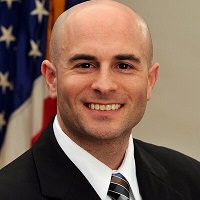 By Steven Posnack, M.S., M.H.S./Director, Office of Standards and Technology , and
By Steven Posnack, M.S., M.H.S./Director, Office of Standards and Technology , and
Tracy Okubo, PMP/Public Health Analyst
Approximately two months ago, we launched the Interoperability Proving Ground (IPG), an open, community platform where you can share, learn, and be inspired by interoperability projects taking place across the nation. Since its launch, the IPG has steadily gained new entries. What started as 30 active projects across dozens of states has grown to over 200.
But from the beginning, we knew we would need to continue improving in order to maximize the value you can get out of IPG and to keep submissions coming. That’s why we are pleased to announce a suite of new features to make the IPG more usable and user-friendly.
The IPG n ow includes a subscription feature. Starting today, you will be able to subscribe to and follow projects by tag and U.S. state, as well as configure your preferred notification frequency. For instance, if you are interested in receiving updates on projects relating to “FHIR,” you can subscribe to that tag and be notified when new FHIR-based projects are added. Similarly, if you work in Maryland, you could subscribe to the state and be notified any time a new Maryland-based project is added to the IPG
ow includes a subscription feature. Starting today, you will be able to subscribe to and follow projects by tag and U.S. state, as well as configure your preferred notification frequency. For instance, if you are interested in receiving updates on projects relating to “FHIR,” you can subscribe to that tag and be notified when new FHIR-based projects are added. Similarly, if you work in Maryland, you could subscribe to the state and be notified any time a new Maryland-based project is added to the IPG
We have also upgraded the interactive map’s filter functionality. That means you will now be able to filter the map display by project tags and state as well as export the data once you are done.
It is important to note that this subscription feature is open to anyone that creates an IPG account. In other words, you do not need to add a project to the IPG to subscribe to a tag or state. We hope this feature will enhance the IPG’s value to project contributors and health IT stakeholders alike.
As the IPG grows, it will enhance transparency and community connections in a lightweight and automated way. We know that information is already flowing safely and securely all across the nation. We hope you enjoy sharing your work and inspiring your colleagues.
This post was originally published on the Health IT Buzz and is syndicated here with permission.
